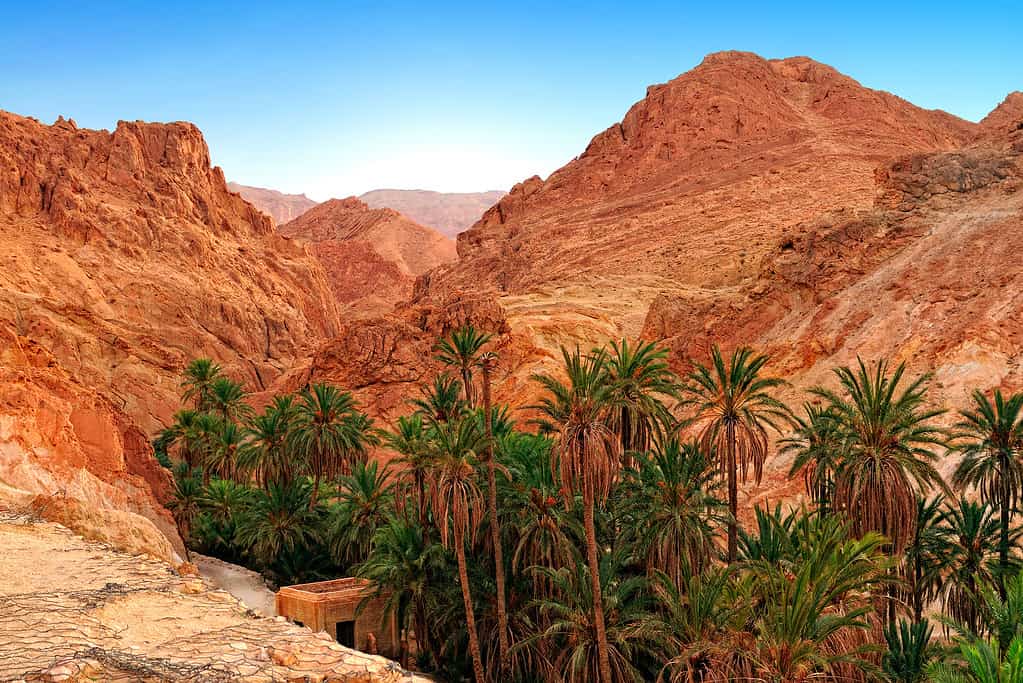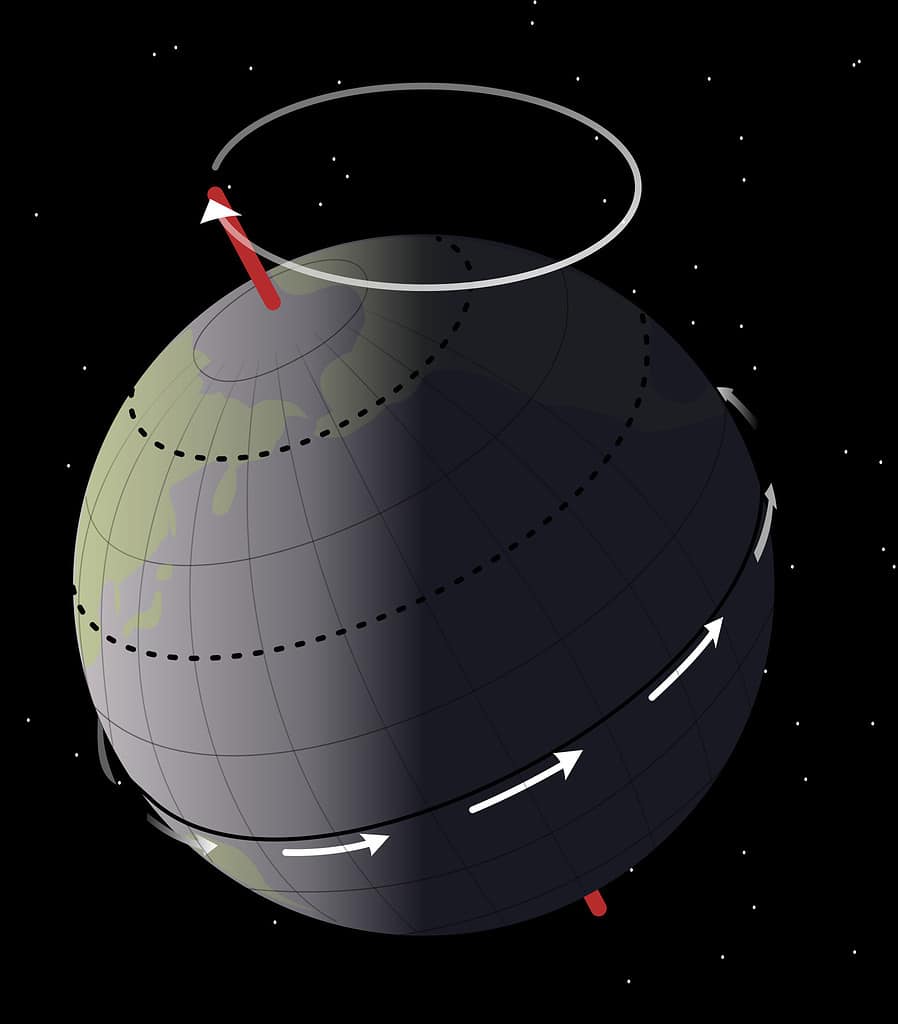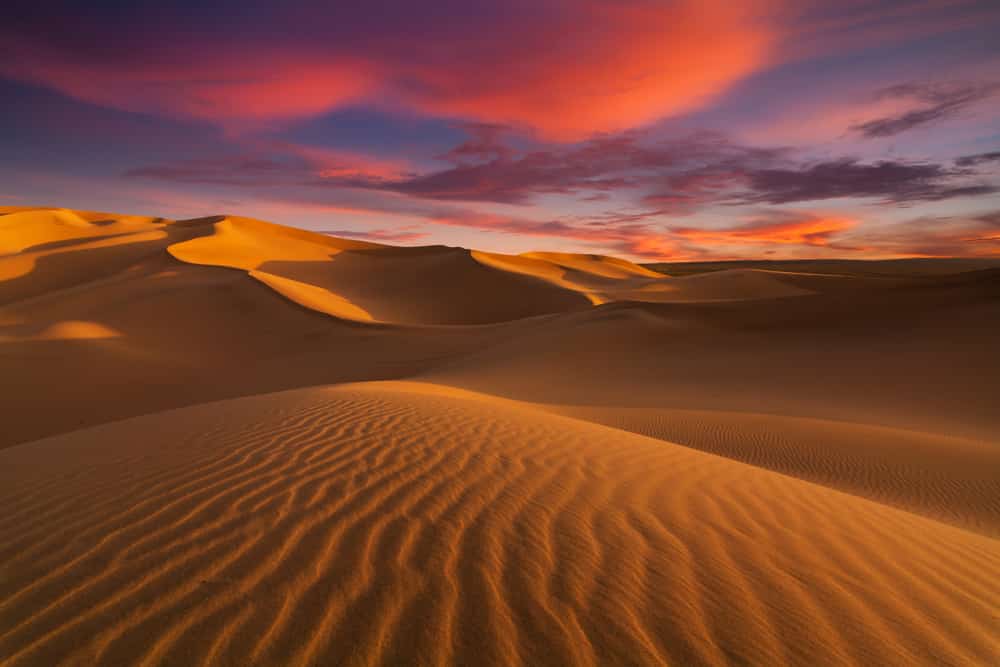The Sahara Desert is far and away the world’s largest hot desert, trailing behind only the cold deserts at the Earth’s poles. It encompasses nearly all of Northern Africa, covering an area greater than 3,500,000 square miles. But Northern Africa wasn’t always the desert region we see today. Throughout its history, the region has seen deep lakes and lush, green vegetation, the drying of a sea, and even a much larger span of desert than the current one. The desert’s climate continues to change slowly to this day. But while we know that the region has seen drastic changes in its past, we are still not sure exactly how, when, or why the Sahara Desert formed in the first place.
Competing Theories
Several different theories about the Sahara’s formation have been suggested over the last hundred years. Research in various fields continues, utilizing climate models, geological surveys, and archaeological finds to try and pinpoint the era in which the desert first took shape. Today, some scientists posit that the desert first formed as far back as 7 million years ago. Others believe that weather changes brought on by the onset of an ancient ice age drove the arid climate into existence. The actual age of the desert, it seems, may lie somewhere in between. To understand the theories about how the Sahara Desert formed, however, we first need to look at a mechanism that has historically caused the desert’s climate to shift dramatically.

Though pockets of greenery exist in the Sahara, it used to be much greener. What changed?
©IgorSPb/iStock via Getty Images
Climatic Shifts Due to Axial Tilt
While the Earth may seem stable from where we stand on its surface, it actually “wobbles” slightly in its orbit. In cycles of roughly 26,000 years, this wobbling gradually changes the Earth’s orientation toward the sun. It is this wobble, called axial precession, that brought about the most recent transition of the Sahara Desert from lush greenery into the arid landscape we see today.

The Earth “wobbles” on its axis in a phenomenon known as axial precession, which gradually changes its orientation toward the sun.
Though the natural change in the planet’s axial tilt is very slight, it is enough to significantly affect the amount of sunlight a region receives. This change in radiation affects temperatures and weather patterns, which in turn affect plant life, setting off a cascade of climate-altering changes. As the area experienced less sunlight in the past, the seasonal monsoons that allowed it to support lush plant life weakened. As plant populations declined, so did their contribution to atmospheric moisture and subsequent rainfall events, creating a feedback loop that would eventually lead to a dry Sahara.
We now know about the key mechanism that drives the cyclical change in climate in the Sahara, but when did these patterns begin? When did the Sahara Desert first take shape?
The Advent of the Sahara Desert

Research continues in attempts to pinpoint the original cause of the Sahara’s aridity.
©Peter116/Shutterstock.com
Despite how much we know about our world today, the true age of the Sahara Desert is still unknown. Many researchers believe that the initial formation of the Sahara Desert occurred in the Pleistocene epoch, which began about 2.6 million years ago. Around that time, the Earth was beginning to experience an ice age, in part due to changes in axial tilt. As temperatures changed and weather patterns shifted, the Sahara presumably dried up for the first time. Other scientists, however, believe that the region first dried up several million years prior.
In 2014, a team of researchers used climate simulations to turn back the clock on the African and Eurasian continents. What they found was that the gradual shrinking of the ancient Tethys Sea, brought about by continental shift, could have led to a drastic decrease in the region’s rainfall. As the two continents moved closer, the Tethys gave way to the much smaller Mediterranean, Caspian, and Black seas. With less water to reflect sunlight and more land to absorb heat, the researchers suggest, rainfall plummeted and the Sahara began to take shape for the first time around 7 million years ago.
As convincing as both of these theories may seem, the events that first caused the area to dry up are still unknown. Recent findings, however, show that the desert’s age may lie somewhere in between these two estimates.
Lines in the Sand
In 2020, geologists with the USGS and the Universidad de Las Palmas de Gran Canaria published the results of a geological investigation that provides harder numbers on the desert’s early history.
We know today that winds carry dust from the Sahara Desert across large portions planet, as far west as South America, and have done so for millions of years. As the dust travels toward the Atlantic Ocean and beyond, some of it becomes deposited in the neighboring Canary Islands. This has been the case for millions of years. In an attempt to determine the age of the Sahara, the researchers studied a series of lines, called soil horizons, created by this dust as it landed on the islands over time and became fossilized.

Dust from the Sahara Desert travels on the wind across much of the globe.
©U.S. Geological Survey / Public Domain – Original / License
What they found was that the desert began depositing dust on the Canary Islands much earlier than the Pleistocene. The bottommost fossil soil horizon indicates that the first deposits of Saharan dust began arriving as early as 4.8 million years ago. These findings line up with similar records taken from the deep sea off Africa’s western coast. Though there may be more to the picture, it would seem that the Sahara Desert is around 4.8 million years old. With this new data in the picture, the events that caused the desert’s initial formation may finally be brought to light.
The Sahara Desert of Today
Though we don’t know exactly when the Sahara formed initially, we do have a good idea about when it last exited its green phase or the African Humid Period. Right on track with axial precession, around 8,000 years ago, the arid Sahara Desert we know today began to take shape. Interestingly, some proxy records show that this particular climate shift happened at a much faster rate than those previous.
Around the time this transition began to occur, humans in and around northern Africa had started farming. Researcher David Wright believes that this may have been a contributing factor in the region’s accelerated shift towards aridity. As pastoralism took hold, he suggests, the changes in the region’s vegetation by grazing livestock may have contributed to the changes in weather patterns that ended the African Humid Period.

Humans may have accelerated the Sahara’s most recent transition into aridity.
©fogcatcher/Shutterstock.com
We know that plants play a vital role in the water cycle, collecting and transpiring water back into the atmosphere. They also absorb large quantities of the sun’s light, using it and stored water to create sugars through photosynthesis. By preventing sunlight from reaching the soil and covering that soil with plant matter, plants help soil retain moisture in the long term. With widespread changes and overall reduction in vegetation, then, it seems feasible that human activity in the area may have accelerated the transition toward a dry Sahara.
In no way does Wright suggest that human activity was the only cause of the drying of the Sahara. However, his correlation of the data on hand paints a picture that those of us alive today should observe and consider. In the face of modern climate change, the changes we make to our landscape may very well send us and our world past the tipping point.
Thank you for reading! Have some feedback for us? Contact the AZ Animals editorial team.








